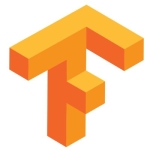What is our primary use case?
PyTorch is used to develop machine learning models. I use the products depending on the kind of project I work on, and though I use PyTorch, I am more of a Python person. The use of the products depends on the kind of project I deal with, and though I use PyTorch, I am more of a Python person who uses it for data engineering. I use PyTorch when I am developing or writing my research, but not at the start of my work. The use of the product depends on the project I work on in my company. Python is mostly enough to deal with the boom due to the introduction of generative AI, but when there is a need for fine-tuning, we go for PyTorch in our company.
What is most valuable?
If you compare PyTorch with TensorFlow, I would say that PyTorch gives one more option to help build customized stuff, especially when building your own logic.
What needs improvement?
The product has certain shortcomings in the automation of machine learning. With automated machine learning, you just need to provide the dataset, and the tool does everything for you. The automated machine learning part can help since all you need to do is provide the datasets and let the solution build the models for you, and then, it can also work to improve it further. An automation process needs to be associated with the machine learning part. PyTorch is mostly used for deep learning models, so automation processes can be good, but they are difficult to implement. If it is possible to implement automation features in the product, then it would be better for the tool.
For how long have I used the solution?
I have been using PyTorch for ten months to a year. I used the tool during the PoC phase in my company, and we are doing it again right now for our clients. I am a user of the tool.
Buyer's Guide
PyTorch
March 2025
Learn what your peers think about PyTorch. Get advice and tips from experienced pros sharing their opinions. Updated: March 2025.
847,862 professionals have used our research since 2012.
What do I think about the scalability of the solution?
You just go and install the tool on your laptop, so there is no user management or something like that when it comes to PyTorch. PyTorch is not like Amazon or other AWS products where you have to keep on adding users or create accounts for users. We just need to install the tool and work with it.
My company only has 300 employees, out of which only 10 to 20 people work in the data center where PyTorch is used.
How are customer service and support?
If I face some issues, I use PyTorch's community support. I haven't contacted PyTorch's technical support team.
Which solution did I use previously and why did I switch?
My company has used Pinecone's PoC phase, but not for production. My company has banking clients like Citibank and Citizens Bank, who have some generative AI-related use cases for which we are building some solutions, and for them, we store the vectors in Pinecone. I use Pinecone from a PoC point of view and not in the production use case. Other than Pinecone, my company uses PGVector.
How was the initial setup?
The product's initial setup phase is easy. The deployment of the product depends on the hardware you have in your company because it requires GPUs. If you work with a single GPU, it is not at all a problem to install the product, but if you have multiple GPUs, then it might have some complexities. I would say it is easy to deploy the product. Compared to the tool's previous versions, the current version of the product is much better. In the tool's previous versions, there were some issues during the deployment process, and I have seen some complexities. Though there are some complexities with the deployment process, I feel it is okay.
The installation part is okay. At present you can install the product directly, but at the starting phase, you need to install CUDA separately, and even after that there might arise some version issues and mismatches in the tool.
Which other solutions did I evaluate?
My company chose PyTorch based on the use cases we have to deal with and the requirements of our clients. PyTorch is used as a common framework. For the building models, you either have PyTorch or TensorFlow, which are the best options right now in the market. PyTorch or TensorFlow are the open-source frameworks you can find.
What other advice do I have?
Whether I would recommend the product or not depends on the kind of work someone is doing. If you are just getting into data science or deep learning this week, learning and building these models, then directly starting with PyTorch is okay for you, but I would say that it would be better if you first learned all the basic concepts before getting into machine learning. It is important to gain knowledge about Python and all the machine learning libraries and then get into deep learning before starting to use PyTorch.
When it comes to PyTorch, you use it to build models. If you have a machine learning or AI model, and you just use them, then the basics of PyTorch can be helpful. If you are into the building of models or creating new models, then you need to have more programming knowledge.
If you are a programmer, then learning to use the product would be easy. If you are from a non-programming background, then I would not suggest the product to you.
Compared to TensorFlow, I like PyTorch's abilities in terms of its programming, flexibility and ability to customize based on the needs of the users.
I rate the tool an eight out of ten.
Disclosure: I am a real user, and this review is based on my own experience and opinions.












